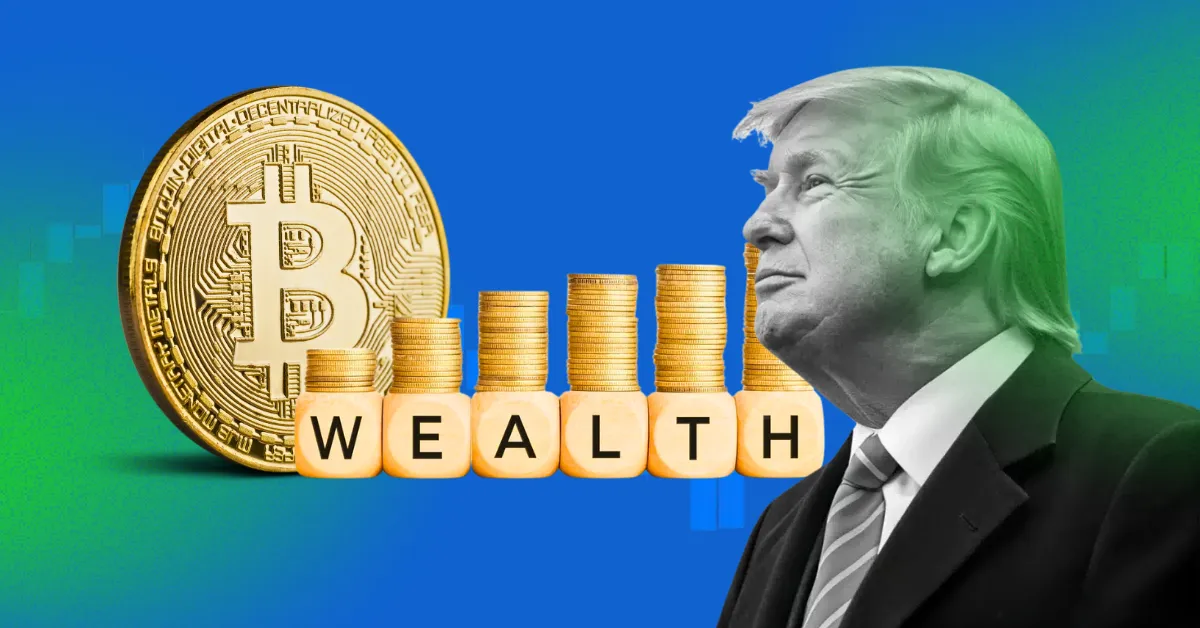The United States is on the cusp of a transformative shift in its economic strategy, one that could redefine its financial landscape and global standing. The proposed establishment of a Strategic Bitcoin Reserve, championed by the Trump administration, represents a bold departure from traditional reserve assets like gold. This initiative, set to be detailed in a comprehensive crypto report on July 22nd, underscores a strategic pivot towards digital assets, positioning the US as a leader in the evolving digital economy.
The concept of a Strategic Bitcoin Reserve is rooted in a multifaceted approach to economic diversification, technological innovation, and global leadership. By integrating Bitcoin into its national reserve, the US aims to hedge against traditional economic uncertainties while fostering a conducive environment for crypto-related businesses and talent. This move is not merely speculative but a calculated effort to assert dominance in the digital asset space, ensuring the US remains at the forefront of financial innovation.
Funding the reserve is a critical aspect of this initiative, with several innovative mechanisms under consideration. Reallocating tariff revenue, revaluing gold certificates, and utilizing seized crypto assets are among the proposed strategies. These methods underscore the administration’s commitment to building the reserve responsibly, avoiding direct financial strain on taxpayers. By leveraging existing revenue streams and seized assets, the US can accumulate Bitcoin without additional fiscal burden, ensuring the reserve’s sustainability and growth.
The July 22nd report is anticipated to provide a detailed blueprint for the Strategic Bitcoin Reserve, addressing key areas such as reserve management, market impact, and regulatory frameworks. Industry experts expect the report to outline how the US government will manage the Bitcoin reserve, including storage, security, and potential utilization strategies. Additionally, the report is likely to analyze the reserve’s impact on Bitcoin’s price and overall market dynamics, as well as propose regulatory measures to support the crypto industry’s growth while mitigating risks. The report will also delve into broader digital asset policies, including stablecoins, tokenization, and other blockchain innovations, ensuring a comprehensive approach to the US’s digital asset strategy.
Integrating Bitcoin into the US financial system presents both challenges and opportunities from a tax perspective. The tax treatment of Bitcoin holdings within the reserve is a key consideration, with potential capital gains and tax reporting requirements needing clear guidelines. The IRS has already issued guidance on cryptocurrency taxation, but the establishment of a Strategic Bitcoin Reserve will necessitate further clarification and refinement of these rules. Ensuring compliance with tax laws while fostering a conducive environment for crypto innovation will be crucial for the reserve’s success.
The Strategic Bitcoin Reserve holds the potential for significant benefits, including increased confidence in the cryptocurrency market, economic growth, and financial innovation. However, it also entails certain risks, such as price volatility, security threats, and regulatory uncertainty. A comprehensive risk management framework will be essential to mitigate these potential downsides, ensuring the reserve’s stability and long-term viability. By carefully weighing the benefits and risks, the US can navigate the complexities of integrating Bitcoin into its financial system, paving the way for a more robust and innovative economy.
Beyond Bitcoin, the US is also developing a broader digital asset strategy, exploring the potential of stablecoins, tokenization, and other blockchain innovations. Stablecoins, pegged to stable assets like the US dollar, could facilitate faster and cheaper transactions, enhancing the efficiency of the financial system. Tokenization, which involves representing real-world assets as digital tokens on a blockchain, could unlock new opportunities for investment and economic growth. By embracing a diverse range of digital assets, the US can position itself as a leader in the digital economy, driving innovation and attracting global investment.
In conclusion, the US Strategic Bitcoin Reserve represents a bold step towards embracing the future of finance. By strategically integrating Bitcoin into its economic framework, the US aims to solidify its position as a global leader in the digital asset space. While challenges and risks remain, the potential benefits are substantial, including increased confidence in the cryptocurrency market, economic growth, and financial innovation. As the July 22nd report approaches, the world awaits with anticipation, eager to learn the details of this groundbreaking initiative and its implications for the global economy. The journey into the digital frontier has begun, and the United States is determined to lead the way, shaping the future of finance and setting a precedent for other nations to follow.

